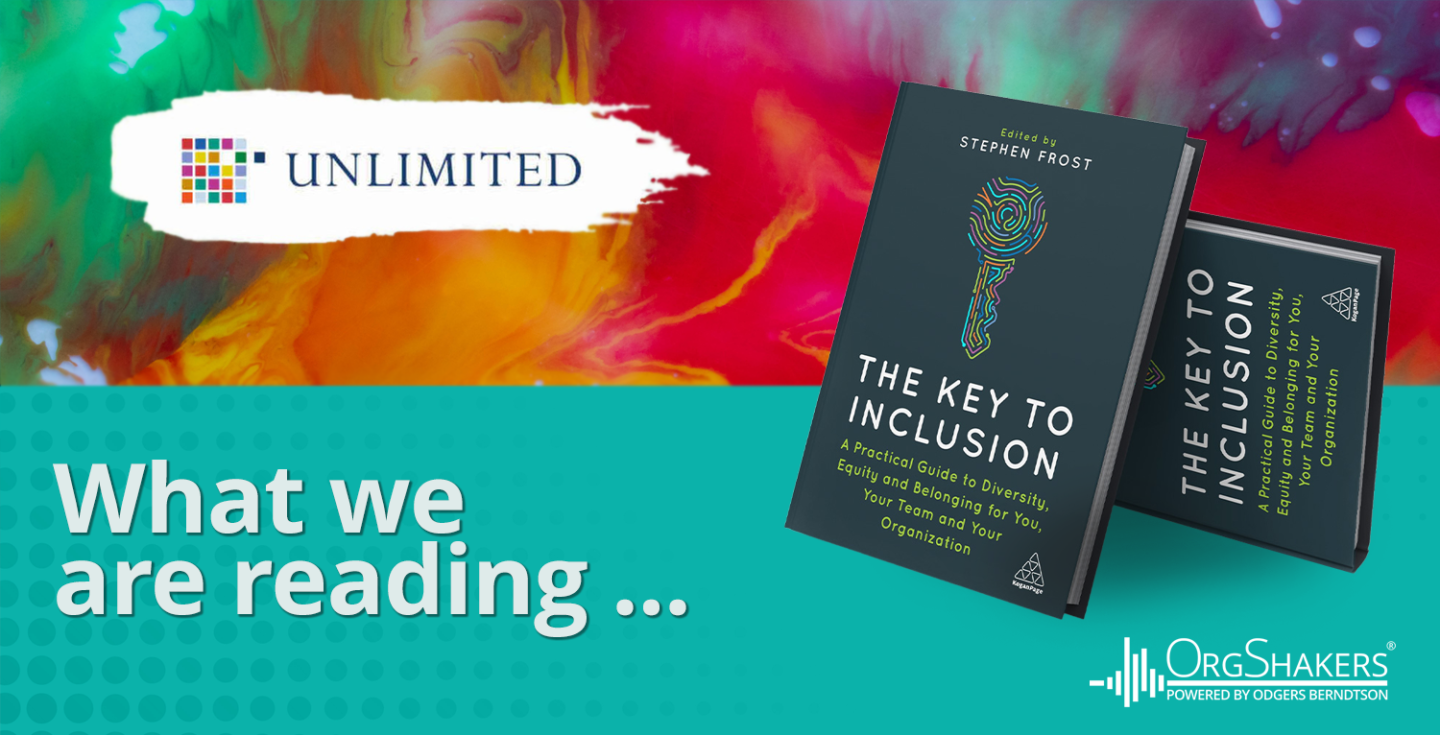Menu

What We’re Reading: The Key to Inclusion by Stephen Frost
This month, we have got our hands on a copy of Stephen Frost’s latest book, The Key to Inclusion. With input from authors who are experts in their field of diversity, equity, and inclusion (DEI), Stephen has put together and edited this practical guide with strong strategies, examples, and case studies demonstrating how to cultivate and embed an inclusive culture in your workplace.
The book is divided up into four parts which address the key topics surrounding DEI, as well as identifying and examining the drivers of inclusion:
Part One: Unlocking You
In the first part of his book, Stephen takes the reader through the concept of ‘cognitive load’ – which is the amount of information the working memory can hold at one time – and identifies this as a barrier to inclusion. For DEI to succeed in a workplace, leaders must recognize and adapt to their employees’ cognitive load and find ways of reducing it.
He then goes on to outline the formation of a ‘growth mindset’ and highlights how this is a key ingredient of an inclusive company, as well as how leaders can begin to develop cultural intelligence to foster an inclusive working environment.
Part Two: Unlocking Your Team
In the second part, Stephen zooms in on the ideal management practices that leaders can adopt to foster an inclusive environment, and he does this by looking at two key areas: the structure that leaders adopt for their teams and how the fourth industrial revolution – the introduction and assimilation of artificial intelligence and new technologies – influences these structures.
Part Three: Unlocking Your Organization
In the penultimate part, the focus is centred around rethinking strategy so that inclusion can be repositioned into the strategic fabric of the organization. This process is broken down into phases:
- Diversity 101 (foundations) – incorporating the minimum legislative approach to diversity.
- Diversity 2.0 (appearance) – ‘Taking a stand’, which is manifested in corporate messaging.
- Inclusion 3.0 (interior structures) – Practicing diversity throughout all behaviors and layers of the organization.
- Inclusion 4.0 – Overhauling the entire system and not simply incorporating an inclusion element.
The chapter then goes on to examine the key drivers of inclusion and how to interact with each of them, and these are data and measurement, governance, leadership, and system and processes, in addition to strategy from the previous part.
Part Four: Unlocking the Future
In the final part of Stephen’s book, he advises employers how they can look ahead to embed inclusion at the centre of technological, leadership, and problem-solving skills. This begins with finding the best way to measure your inclusion impact, and harnessing this data to create a roadmap for your inclusion initiatives.
He then goes on to contextualize this by industry, including tech, TV and film, and financial services.
The book takes the reader on a journey of inclusion, from understanding it at its foundations to making it a staple part of the foundations of an entire company. By doing so, employers can begin to unlock its power – and this book is the first step to finding that key.
If you would like to purchase a copy of Stephen’s book head over here for the UK and over here for the US.
If you would like to discuss how we can help implement a DEI and inclusion strategy, please get in touch with us.



